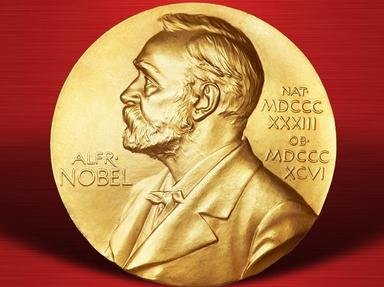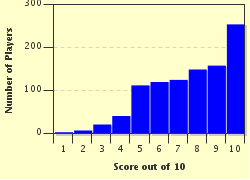Quiz Answer Key and Fun Facts
1. Marie Curie, best known for her research in radioactivity, won two Nobel prizes - in 1903 and 1911 respectively. In which fields were these prizes given?
2. Frederick Sanger was awarded the Nobel Prize in Chemistry in 1958 and 1980, for his work on the structure of proteins and insulin, and for his work in nucleic acids. With which person did he share his 1980 award?
3. Linus Carl Pauling also won two Nobel awards: Chemistry in 1954 and Peace in 1962. His Peace award is closer to his scientific background than you might think. What did he win the Peace Prize for?
4. John Bardeen, who was a physicist and won his Nobel awards in Physics in 1956 and 1972, did not have to share either award with anyone else.
5. The Curie success ran in the family. Along with her husband, Frederic Joliot-Curie, she won a Nobel Chemistry award in 1935 for their synthesis of (at the time) new radioactive elements. Can you remember her first name?
6. Niels Bohr and Aage Bohr both won Nobel Prizes in Physics in 1922 and 1975 respectively. What relation was Aage Bohr to Niels Bohr?
7. Jan and Nikolaas Tinbergen were Dutch brothers who won their Nobel prizes in very different areas. Whilst Nikolaas won his in Physiology or Medicine in 1973, Jan had won his in 1969 in which area?
8. Alva and Gunnar Myrdal were a married couple who both won Nobel prizes in rather different areas: Peace and Economics respectively. In which country were they both born?
9. Carl and Gerty Cori, a married couple at the time, both won the Nobel Prize in Physiology or Medicine in 1947 together. Which chemical substance stored in animal cells were they given the award for, due to their discovery of catalytic conversion within it?
10. William and Lawrence Bragg, a father and son pair, also won their Nobel prize in 1915, for study into crystal structure and the X-ray. In which field did they win their prize?
Source: Author
malik24
This quiz was reviewed by FunTrivia editor
bloomsby before going online.
Any errors found in FunTrivia content are routinely corrected through our feedback system.


